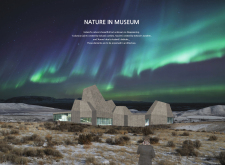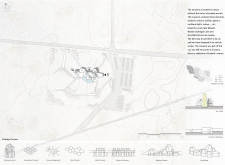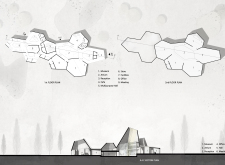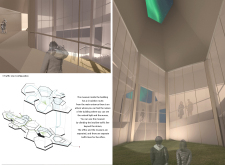5 key facts about this project
The design efficiently integrates varied volumetric forms, which resonate with natural irregularities found in Iceland's topography. This design approach not only caters to the functional needs of the museum but also mirrors the organic characteristics of the landscape. The museum encompasses dedicated areas for exhibitions, educational programs, and public gatherings, making it a versatile environment for both tourists and locals.
Environmental Integration and Material Selection
A key feature of the “Nature in Museum” project is its deliberate materiality. The predominant use of concrete and extensive glazing promotes structural robustness while ensuring transparency between the interior and exterior environments. Concrete is utilized for its durability and adaptability, echoing the geological attributes of the surrounding landscape. Large glass panels foster a visual connection with the external scenery and allow natural light to penetrate the interiors, enhancing the visitor experience.
In addition, the project's design emphasizes passive solar heating and natural ventilation, underscoring a commitment to ecological sustainability. Circulation paths are designed to encourage exploration, linking various spaces in an integrated manner that promotes interaction and engagement with the exhibits.
Functional Spaces and User Experience
The layout features a series of interconnected spaces, with a central atrium acting as the heart of the museum. This space not only provides assembly areas for visitors but also hosts skylights that display the phenomenon of the auroras. The organization of functional spaces includes dedicated exhibition halls, multipurpose rooms, cafes, and retail areas, all designed to support diverse activities while maintaining a cohesive flow.
The visitor circulation strategy enhances user experience by providing clear pathways and visual sightlines that direct engagement with both the exhibits and nature outside. Observation decks positioned within the project offer unique vantage points for viewing Iceland’s dramatic landscapes, reinforcing the museum's connection with its environment.
For further insights into the architectural plans, sections, and designs that encapsulate the vision behind the "Nature in Museum" project, readers are encouraged to explore the detailed presentation. This resource provides depth in understanding the architectural ideas that inform this unique design initiative.


























